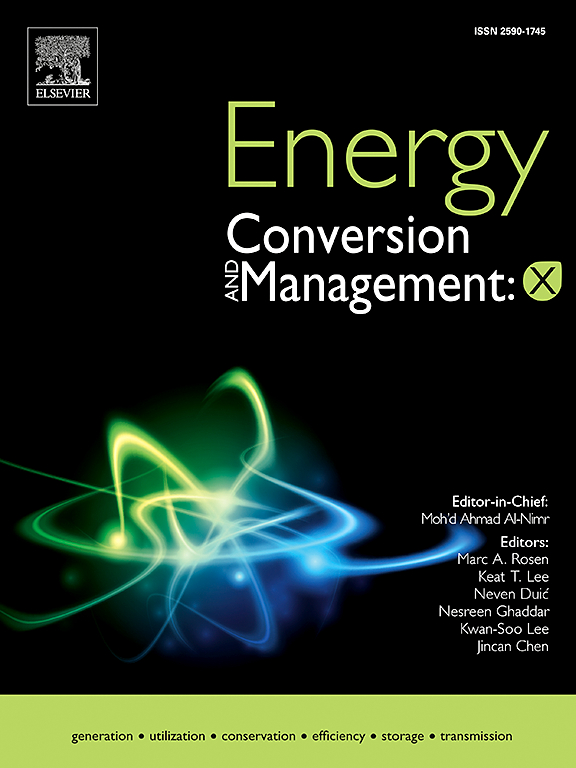Comparative assessment of single axis manual solar PV trackers: A case study for agricultural applications
IF 7.1
Q1 ENERGY & FUELS
引用次数: 0
Abstract
Harnessing solar energy through photovoltaic (PV) systems has become crucial due to the global need for sustainable energy solutions. Agricultural projects are often conducted in remote areas lacking direct access to the power grid. This study evaluates four solar system configurations for irrigation. The first is a fixed-panel system with panels oriented south at an optimized tilt angle. The second and third systems involve manual adjustment, requiring one or two rotations per day to enhance solar tracking. The fourth configuration is a dual-axis tracking system, which continuously tracks the sun in real-time. The case study, conducted over six months (May to October) in northern Lebanon, utilized hourly solar irradiance data from an on-site pyranometer to determine optimal tilt angles for the fixed and manually adjusted systems. Solar irradiation received by each configuration was then calculated and compared. Results show the dual-axis system performed best, capturing 38% more solar energy than the fixed system. Manually adjusted systems also improved efficiency, with one-time daily rotation increasing energy capture by 23% and two-time daily rotation by 28%. Although the dual-axis system achieves maximum performance, manually adjusted systems provide a cost-effective alternative with significant efficiency gains and lower installation and maintenance expenses.
求助全文
约1分钟内获得全文
求助全文
来源期刊

Energy Conversion and Management-X
Multiple-
CiteScore
8.80
自引率
3.20%
发文量
180
审稿时长
58 days
期刊介绍:
Energy Conversion and Management: X is the open access extension of the reputable journal Energy Conversion and Management, serving as a platform for interdisciplinary research on a wide array of critical energy subjects. The journal is dedicated to publishing original contributions and in-depth technical review articles that present groundbreaking research on topics spanning energy generation, utilization, conversion, storage, transmission, conservation, management, and sustainability.
The scope of Energy Conversion and Management: X encompasses various forms of energy, including mechanical, thermal, nuclear, chemical, electromagnetic, magnetic, and electric energy. It addresses all known energy resources, highlighting both conventional sources like fossil fuels and nuclear power, as well as renewable resources such as solar, biomass, hydro, wind, geothermal, and ocean energy.
 求助内容:
求助内容: 应助结果提醒方式:
应助结果提醒方式:


